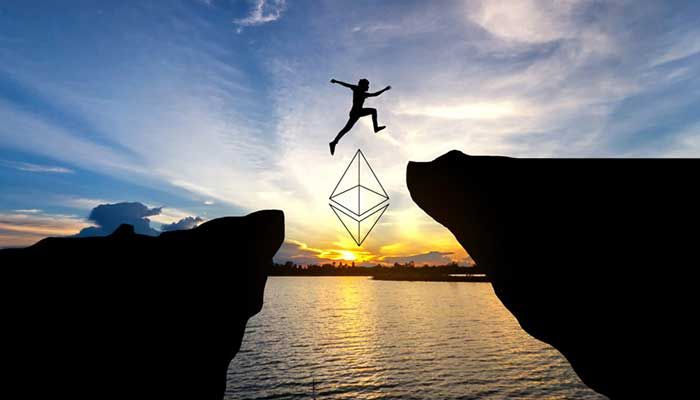Ethereum It is one of the most famous digital currencies in the market and the second largest digital currency in the world after Bitcoin, which has rightly earned the title of the queen of digital currencies. Every crypto investor or trader has definitely bought or considered buying Ethereum at least once.
In the same direction and due to the high importance of Ethereum, we intend in this article The future of Ethereum examine and predict its price until 2040 according to the available evidence. Stay with us.
Ethereum future: Ethereum price forecast from 2024 to 2040
The website Changelly has predicted the minimum, average and maximum price of Ethereum from 2024 to 2040, according to its research. In the table below, you can see the price of Ethereum from 2024 to 2040 according to the information of this site:
| year | Minimum price | average price | Maximum price |
|---|---|---|---|
| 2024 | $3,898 | $4,044 | $4,718 |
| 2025 | $5,673 | $5,875 | $6,704 |
| 2026 | $8,160 | $8,454 | $9,948 |
| 2027 | $11,138 | $11,476 | $14,285 |
| 2028 | $16,218 | $16,678 | $19,547 |
| 2029 | $23,635 | $24,469 | $28,935 |
| 2030 | $34,677 | $35,899 | $41,286 |
| 2031 | $49,228 | $50,663 | $61,639 |
| 2032 | $74,498 | $76,524 | $88,071 |
| 2033 | $110,312 | $113,373 | $131,610 |
| 2040 | $160,990 | $170,060 | $183,665 |
The above table provides you with the general information necessary to predict the price of Ethereum in the coming years. However, in the next section we will have a more detailed look at the price of the popular Ether currency in 2024.
Ethereum price analysis in 2024
According to analysts, the minimum price of Ethereum in 2024 will be around $3,900 and the maximum price will be around $4,700. They also predict the average price of Ethereum this year to be around $4,000.
Ethereum is predicted to have its highest average price in April 2024. According to them, the average price of Ether will reach 2,780 this month.
You can see the predictions of Ethereum price in the coming months of 2024 in the table below.
| the moon | Minimum price | average price | Maximum price | Rate of return on investment or possible ROI |
|---|---|---|---|---|
| March | $2,897 | $3,069 | $3,241 | 10.3 percent |
| April | $2,375 | $2,780 | $3,185 | 8.4 percent |
| may | $2,367 | $2,454 | $2,540 | 13.5 percent |
| June | $2,222 | $2,648 | $3,075 | 4.7 percent |
| July | $2,880 | $3,049 | $3,218 | 9.5 percent |
| August | $1,884 | $2,508 | $3,133 | 6.6 percent |
| September | $1,804 | $2,496 | $3,189 | 8.6 percent |
| October | $1,985 | $2,071 | $2,156 | 26.6 percent |
| November | $1,938 | $2,060 | $2,181 | 25.7 percent |
| December | $1,990 | $2,095 | $2,200 | 25.1 percent |
As you can see, analysts believe that in the last months of 2024, the price of ether will decrease and its return on investment (ROI) will also be negative.
A look at the Ethereum project
According to the definition provided on the Ethereum website (ethereum.org), Ethereum will be the foundation of the next generation of the Internet, i.e. Web 3.0. Ethereum is a decentralized infrastructure and platform and game for building decentralized applications (DApps) and their development.
Read more: What is a decentralized application or DApp? All about decentralized applications
Many developers from all over the world create and build applications such as cryptocurrency wallets, financial applications, decentralized markets, games and many more on the Ethereum platform and blockchain.
Decentralization of these programs means that no specific person or institution controls them. In fact, the idea of the Ethereum decentralized system was inspired by the fundamental technology of Bitcoin, and then the Ethereum team expanded and expanded it.
In addition, by purchasing Ethereum, which is a distributed financial system that provides services such as free and secure access to financial systems, it enables the creation of a payment system and digital money for its users.
History of Ethereum
At the end of 2013, Vitalik Buterin, the creator and founder of Ethereum, who was only 19 years old at the time and was one of the most active and interested people in the Bitcoin community, described Ethereum in his white paper as follows:
Ethereum: the next generation platform for smart contracts and decentralized applications

Ethereum was first officially introduced to everyone at the North American Bitcoin Conference held in January 2014 in Miami by Vitalik Buterin. In April 2014, Gavin Wood, one of the founders of the project, published the specifications and technical plan of the Ethereum Virtual Machine in an article titled “Ethereum Yellow Paper”.
In June 2014, the non-profit Ethereum Foundation was established to further assist in the development of the platform. The headquarters of this foundation is now in Switzerland. The crowdfunding and presale of the Ethereum token called Ether started in July 2014 and lasted for 2 months and was a great success for this team. During this period, about 11.9 million Ethereum tokens were sold, which was actually equivalent to 13% of Ethereum’s circulating capital.
In July 2015, the Ethereum network was launched and started working. Only 7 months later, on February 29, 2016, the market volume of Ethereum’s digital currency, Ether, reached more than 500 million dollars. Currently, Ethereum is the second market currency in terms of capital volume and one of the most popular digital currencies.
Read more: What is Ethereum? Getting to know Ethereum, the smart contract blockchain
The future of Ethereum
Ethereum, like Bitcoin, chose the proof-of-work consensus algorithm from the beginning; But over time, the challenges of this algorithm became clear for Ethereum. The most important challenge was the issue of scalability, which in fact led to the slowness of Ethereum transactions and a significant increase in its fees. This challenge was especially severe for Ethereum, which hosts thousands of smart contracts and tokens, than for Bitcoin.
Read more: What is scalability in blockchain? All about the Scalability Challenge
As a result, Ethereum preferred to replace the proof-of-work consensus algorithm with proof-of-stake. In addition to moving to proof-of-stake, Ethereum has made other innovations to solve its problem, some of which are as follows:
- Casper
- Sharding
- Plasma

Casper
Casper FFG (or Friendly Finality Gadget) is the name of a new block verification protocol that suggests Ethereum will use Proof of Stake (PoS) instead of Proof of Work. In addition to the issue of scalability, Casper is expected to be a solution to problems related to excessive energy consumption and issues related to equal access to mining hardware, centralization of mining pools, and the emerging market of ASICs.
In order to ensure the acceptance of their new fork by its users, Ethereum developers considered a “hard bomb” for the network. The Hard Bomb is actually Ethereum’s solution to convince the network’s miners to migrate to the new blockchain.
Read more: What is Difficulty Bomb and Ethereum Ice Age?
Sharding
Currently, every node that connects to the Ethereum blockchain must validate and confirm all transactions that take place. For example, if 4,000 transactions need to be confirmed in a new block, all nodes must confirm each of these 4,000 transactions. Although this process is useful for network security, it greatly slows down network speed and thus limits scalability.
Sharding changes this situation. When sharding is applied to the blockchain, there is no need for all nodes to work to process each transaction. Implementation of sharding is done with the aim of improving performance and reducing response time.
The process of sharding involves breaking a very large database into smaller, manageable components called shards. Each shard keeps a different transaction history of smart contracts and transactions, and this action allows each node to operate separately and is no longer responsible for confirming all network transactions.
Read more: What is sharding? Sharding solution to solve the scalability problem
plasma
The Plasma project was first introduced in August 2017 by Vitalik Buterin as a second-layer solution aimed at solving Ethereum’s scalability problem. The main idea of Plasma is to create a framework of side chains that will communicate and interact with the main chain as little as possible and make fast and cheap transactions possible.
Such a framework is designed in such a way that it can act as a blockchain tree that is hierarchically arranged in such a way that many smaller chains are dependent on the main chain. These smaller chains are called “plasma chains” or “daughter chains”.
If plasma is implemented on the Ethereum network, the volume of information traffic on the main chain will probably decrease; Because each child chain is designed to work separately and distinctly to achieve certain goals. These goals are not necessarily related to the goals of the main chain.
Read more: What is Plasma in Ethereum?
Frequently asked questions
The future of Ethereum depends on the future of digital currencies in general, and it is not possible to accurately predict the future of these currencies. However, Ethereum is a digital currency that is fundamentally strong and has a very established position.
There is no straightforward answer to this question, and the answer depends on many factors, including risk tolerance and investment style. However, if you are interested in investing in digital currencies, Ethereum is definitely among your options.
Bitcoin is the world’s first digital currency and the first choice of those who have just entered the crypto world. However, portfolio diversification is always a good strategy and Ethereum is an equivalent currency that has positive fundamental characteristics apart from Bitcoin.
last word
In this article, we tried to take a look at the future of Ethereum and share with you the analysts’ prediction of the price of this popular digital currency. To track the current price of Ethereum, we suggest you use the Ethereum price page of the website of Erzdigital.
Today, Ethereum is considered one of the most important and popular platforms in the blockchain and digital currency industry. By providing a user-friendly platform, Ethereum allows industry enthusiasts to take advantage of the power of blockchain technology.
Along with the increasing progress of science, we see that the adoption of blockchain technology and digital currency is increasing among the general public. Ethereum is one of the leaders among them, and as its young founder has claimed, Ethereum seems to be the universal computer for tomorrow’s decentralized applications.
RCO NEWS

















